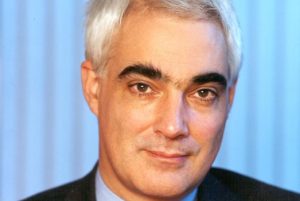Asian stock markets were quiet as investors prepared for a week packed with 13 central bank meetings, all of which are expected to raise borrowing costs throughout the world, with the possibility of a large hike in the United States.
With futures suggesting an 18% possibility of a full percentage point increase, markets have now widely anticipated a raise of 75 basis points from the Federal Reserve.
Also Read| Where to invest during high inflation?
They also predict a 50-50 likelihood that rates will rise to as high as 5.0-5.25% if the Fed is obliged to drive the economy into recession in order to keep inflation under control.
“How high will the fund’s rate ultimately need to go?” said Jan Hatzius, chief economist at Goldman Sachs. “Our answer is high enough to generate a tightening in financial conditions that imposes a drag on activity sufficient to maintain a solidly below-potential growth trajectory.”
Also Read| How Paul Volcker tamed inflation with two recessions in 1980s
He sees the Fed raising interest rates by 75 basis points on Wednesday, followed by two half-point increases in November and December.
Two-year Treasury yields increased by 30 basis points last week to reach their highest level since 2007, which caused equities to appear more costly in contrast and caused the S&P 500 to fall by roughly 5% for the week.
Also Read| The 2008 market crash: Inside the doomsday machine and a brief history
S&P 500 futures were up 0.1% while Nasdaq futures were flat early on Monday due to holidays in Japan and UK observing a day of mourning for Queen Elizabeth II.
MSCI’s broadest index of Asia-Pacific equities outside Japan rose 0.1% after falling almost 3% the previous week.
The Nikkei in Japan was closed, although futures indicated an index of 27,335 as opposed to Friday’s finish of 27,567.
Also Read| How investment and savings strategies changed in last 30 years
On Monday, the dollar held firm at 142.78 yen, having retreated from a recent 24-year high of 144.99 in the face of harsh intervention fears from Japanese policymakers.
The euro was trading at $1.1021, having risen from a recent low of $0.9865 as a result of the European Central Bank‘s increasingly hawkish views.
Also Read| How stock markets have evolved since 1860s
The dollar remained stable at 109.60 against a basket of currencies, barely below a two-decade high of 110.79 earlier this month.






